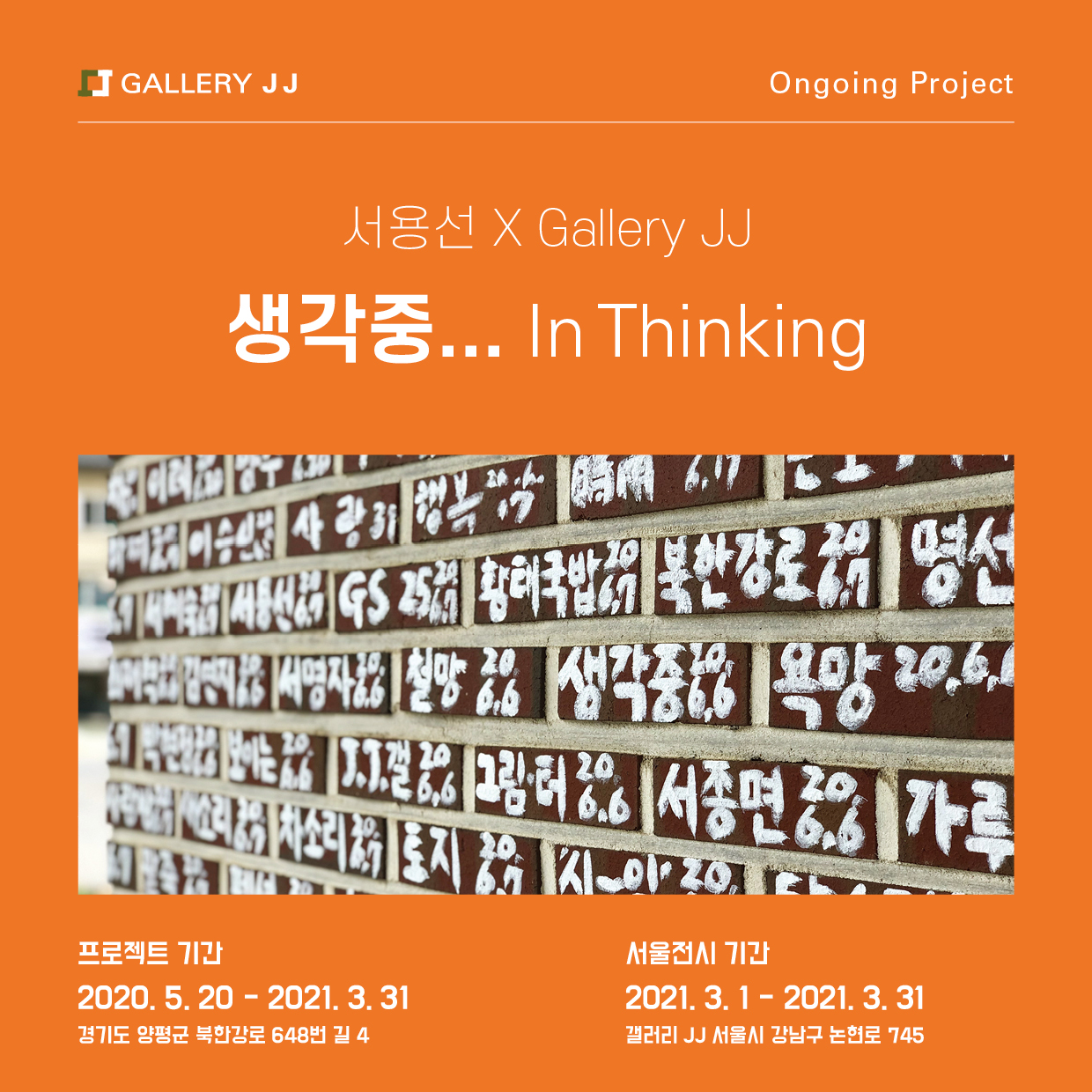
Exhibition Information
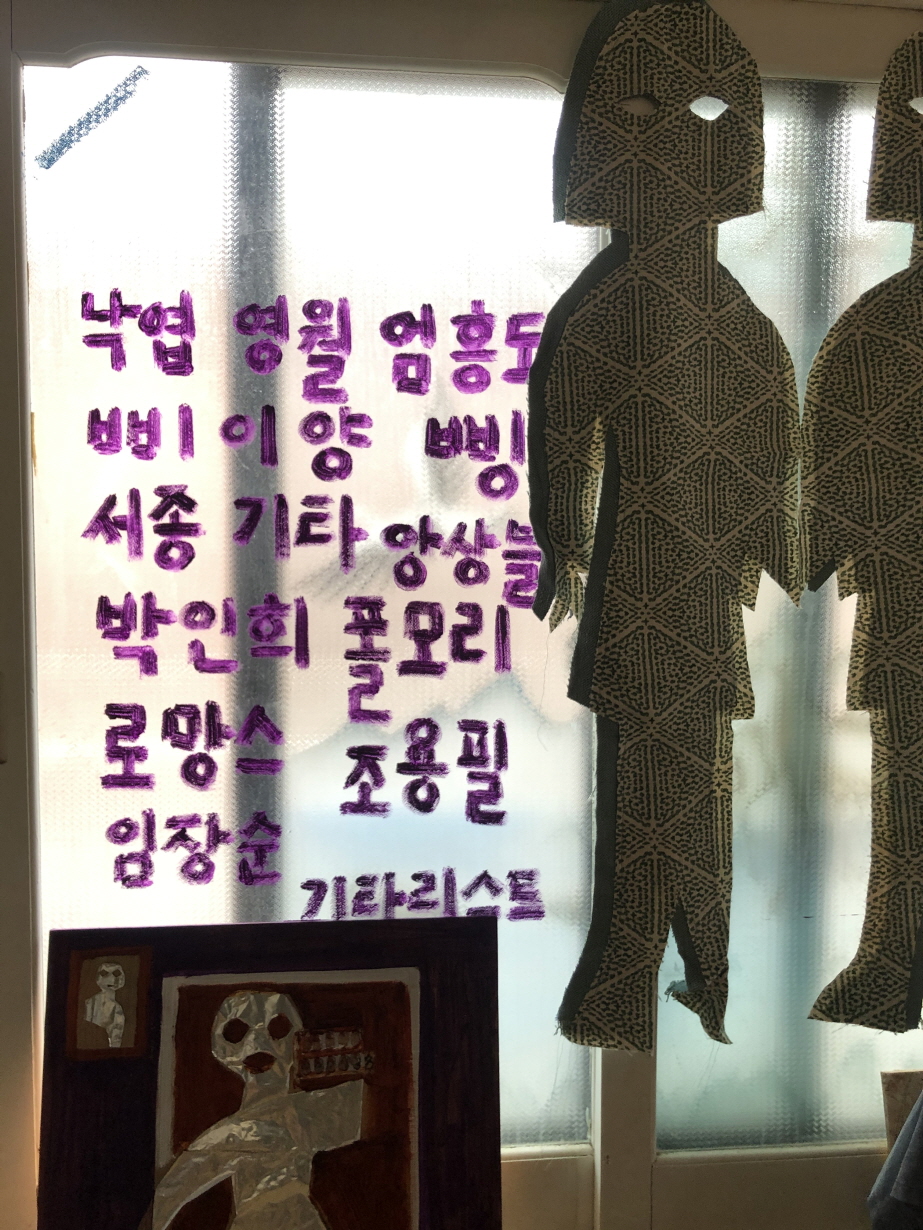
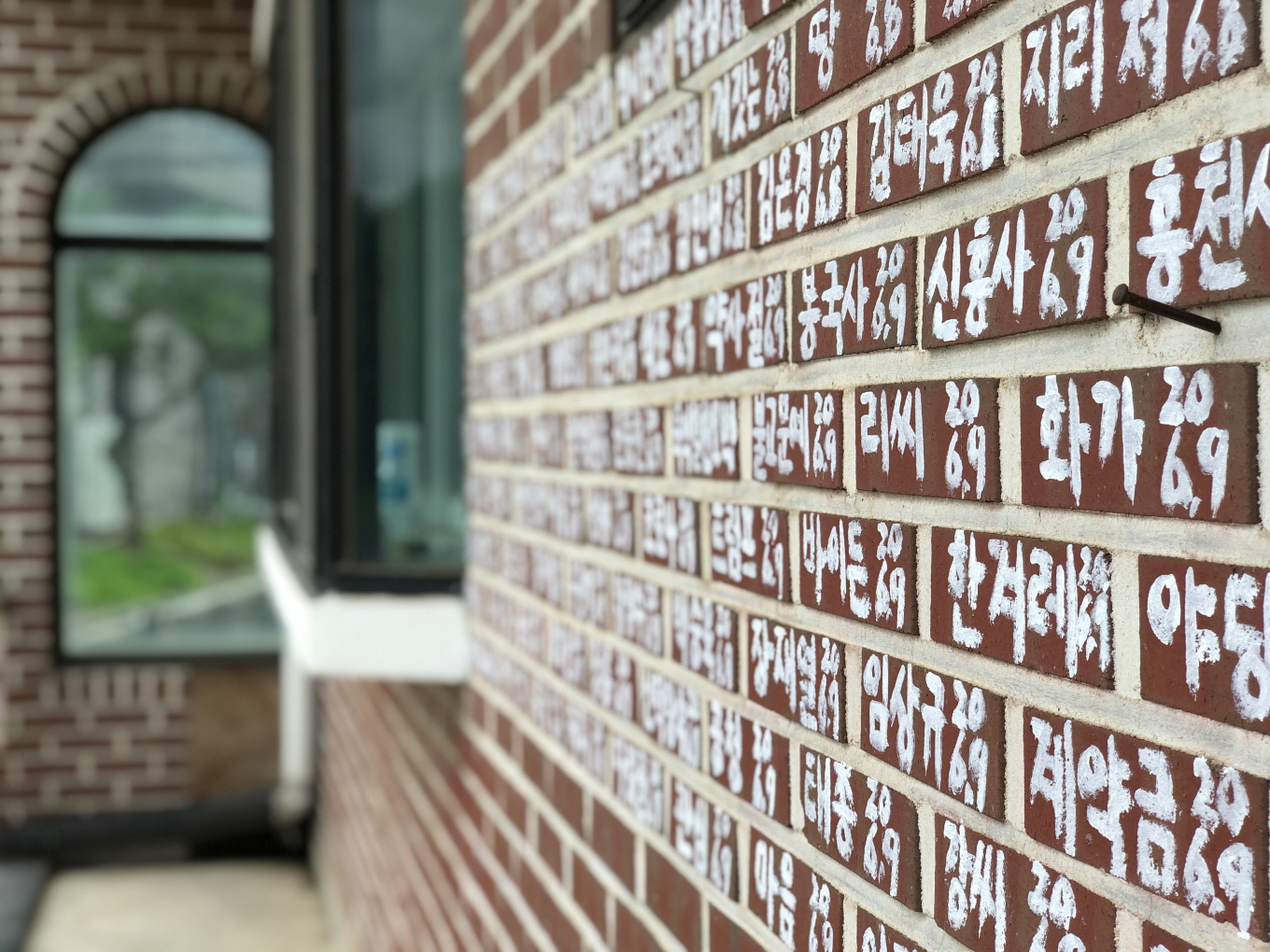
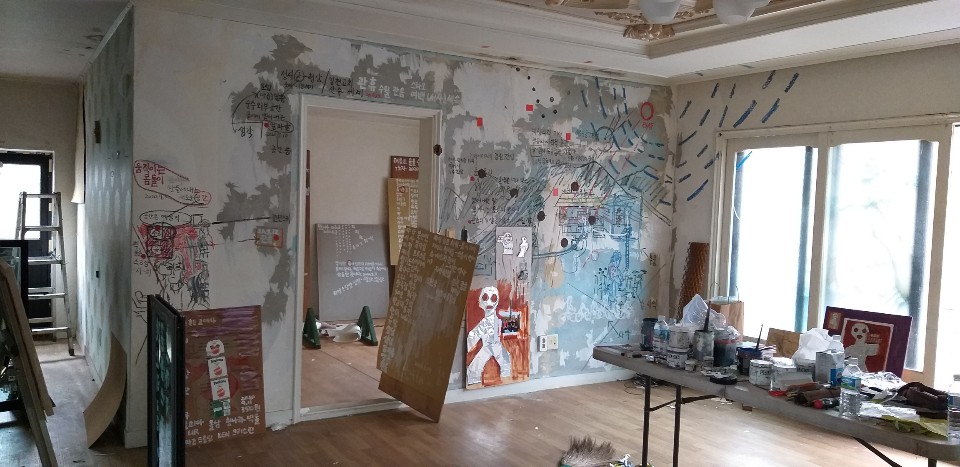
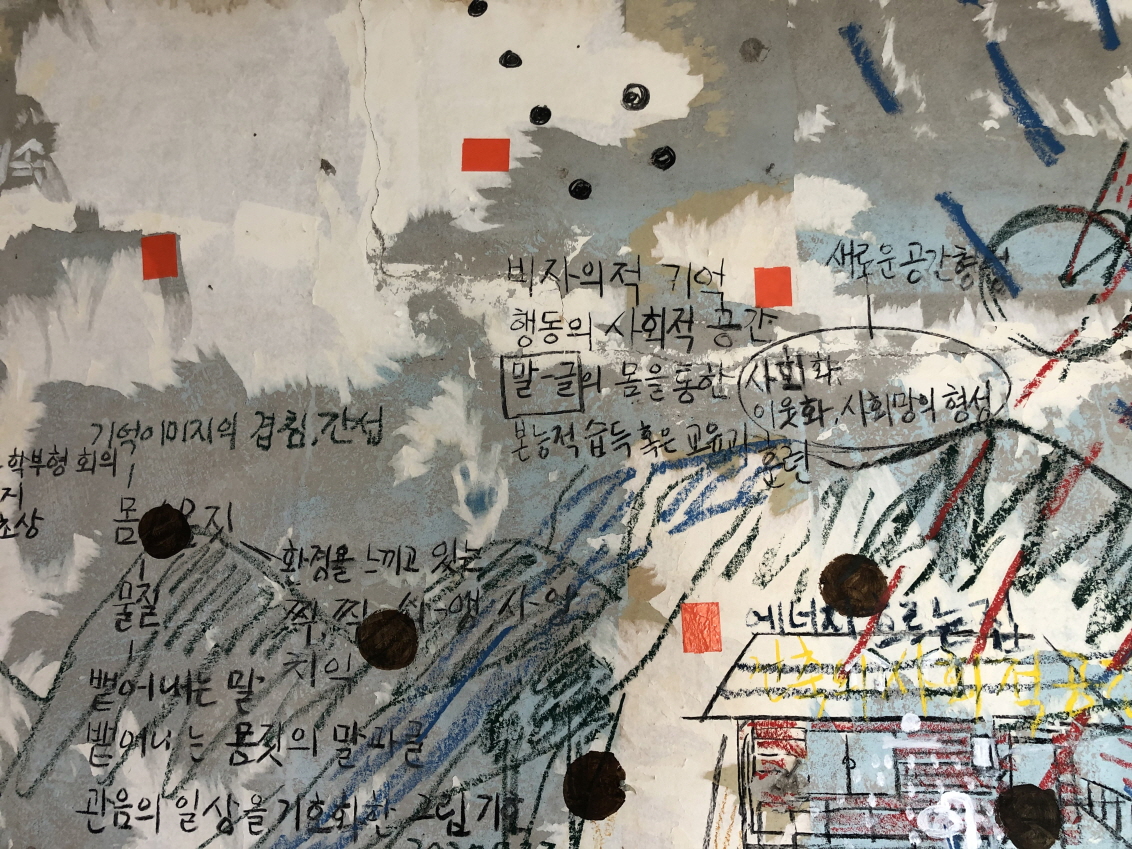
Cuckoo, land, traditional tea. And Goguryeo, myths, Lee Myung-bak. The handwriting on the outer wall is considered scribbling, so it is quite orderly with one word per brick. Farmhouse and graffiti? If it's graffiti, why is it not an image? Curiosity leads to the interior. I wonder if prehistoric cave paintings were like this. This time, the house itself becomes a world of mysterious text and images, inviting us to a new experience by adding a picture and writing to the wall marks that have been torn apart along with a wide range of work tools. The Ongoing Project, hosted by Seo Yong-sun and Gallery JJ, is being held at an empty farmhouse in Garugae Village, Seojong-myeon. The "Thinking" project, literally "process-oriented," began on May 20, 2020 this year and is currently underway as an open space where the artist's work continues, and by March 2021, it will complete its 10-month journey as an exhibition at Gallery JJ Space in Seoul. This project focuses on the art-in-progress and audience participation rather than showing the finished work. As public artist Susan Racy said, the unknown relationship between artists and audiences can itself be art work. As the work progresses, the house gradually evolved into an artistic evolution, but was later demolished and disappeared at the end of this project in line with the original reconstruction schedule. The project could soon be reorganized into a "temporary public art" area that is open to the public as well as an empty home occupation. An empty house used as a project was constructed in the early 1990s in a common manner and is a red single-story brick house that is commonly found outside the city. The project started with writing on the exterior walls of the house. From the end of May, Seo Yong-sun worked on "writing" where she wrote down her thoughts little by little on the wall every day. This change, which started from the outside of the house, accidentally triggered curious sightings and responses from people passing by. Because it was not a common sight. With interesting situations in which people and houses talk to each other, houses are now "talking houses," according to the author. Internal work began in earnest in July. Interior work is presented as a sentence and an image with more specific reasons for the outer wall expressed in words. Not only general painting media such as canvas, panels, and paper, but also murals on interior walls, and buildings with traces of life in the home for more than 30 years, including windows and kitchen sinks, become art media. "I ripped the wallpaper off the room with windows on the street. Because the cement was cracked and I was curious. The cracks in the wall may be due to the weight of the roof. I wonder how much it is. When I tore the paper off the old sink, a strange tile was revealed. I'll have to open some more tomorrow." – Writer's Note – The Thinking project faces two major problems. Influenced by the location and realism of a house that can be a strange working environment, the problem of the writer's writing work, image transformation, and the change of everyday private space to a specific place or public space due to the artist's intervention. * Text and conversation There are everyday words such as hometown, teahouse, bird's sound, and down payment, and historical words such as desire, love, space, and voyeurism, as well as historical words such as Samguk Yusa, Middle Ages, Jacob, and Goryeo. This is a record that the writer wrote while following the flow of consciousness from day to day, recalling his usual thoughts and the people he recently met. They are also words reminiscent of one's recent memories. The author says the text work is "a kind of self-portrait that appears in writing." Like self-portraits, writing is also a phenomenon of countless visual feelings and reasons for oneself. Writing is also a visual form of an image, and images also serve as text. We had calligraphy matching ideas that were integrated and integrated with each other, not in today's independent genre, and we also have a history of calligraphy art where writing works as a painting. In the near-western past, the old poetry of modernism borrowed the shape of the painting and surrealist work actively penetrated into each other's media, borrowing the order of language. Roland Barthes understood painting as text, and modern digital technology broke down the boundaries between letters and pictures and sounds in one fell swoop. Words become pictures and pictures become words. Seo Yong-sun's interests, which have often been seen as text and relatively large numbers on the screen even in his usual work, are boldly and widely revealed in this project. Among the writings written on the wall of the living room, I can see "the overlap of memory images, interference of interference," and "the memory of visa." Text writing is a task of memory. We know that there is definitely a gap between what we remember and what actually happened. In "Image of Proust" (1929), Walter Benjamin even said that memory was an act of weaving and even a penelope of oblivion. One of the biggest features of this project house is that writing and painting are intertwined and create new meanings. The true value of writing is revealed when discovering images, gaps between the numerous links and contexts of writing and languages, gaps in this gap and what is revealed from it, and new backgrounds. * 'Art as a Public Place' Passers-by and neighbors, who happen to witness work on the street, often talk to each other and look around the house. "What kind of freak do you mean at the painter's house?" "It's not a poem, it's not a painting, why..." It's their reaction. The act of scribbling and writing on an unusual wall itself seems uncomfortable, while the passing orchestra director also suggests small performances in front of the house. The network formation with these random people over the wall writing process means that the writing house has begun to transform into a public space past the private space of housing. The ordinary house has been transformed from a private space that used to capture an individual's daily life due to artistic intervention to a performance-oriented public space that now talks to nature and encourages communication with others. The location of the suburban area that a house has, the traces of life that a house has, the sculpture that architecture has, and the interaction with the text and images written on it seem unfamiliar. We hope that diverse and accidental experiences will occur in the project as the work reflects the wide audience population and the changed environment in the field, as well as the audience who will suddenly participate in the creation process. This shows new possibilities as another way of communication in which we relate to art. Seo Yong-sun has participated in many public art projects such as "Iron Rock Drawing," and has learned well about the interaction between writers and communities in real places through this experience. In addition, the project is the deciding part of Seo Yong-sun's work. 1. Image and writing that he usually shows in his work 2. It contains historical perception 3. Above all, it is a close-knit project of human life that he is aiming for. During the period, various events such as music programs and discussions are held in the project collection, and more and more people are coming to experience this unusual space. The Gallery JJ exhibition in March will focus on the results and meaning of the project by organizing various results such as paintings, photographs, and videos produced on site over a nine-month period and records of intangible activities. Kang Ju-yeon | Gallery JJ
